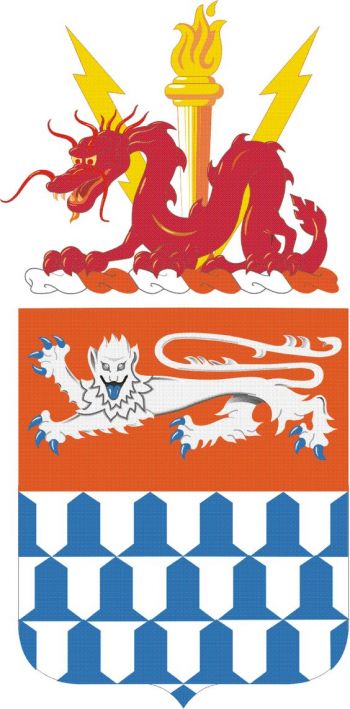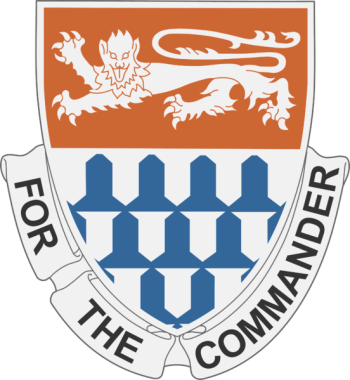36th Signal Battalion, US Army: Difference between revisions
No edit summary |
Knorrepoes (talk | contribs) m (Text replacement - "{| class="wikitable"↵|+Official blazon↵|-↵|'''English''' ↵| (wanted)↵|}" to "{| class="wikitable" |+Official blazon |- |'''English''' | blazon wanted |}") |
||
| Line 12: | Line 12: | ||
|- | |- | ||
|'''English''' | |'''English''' | ||
| | | blazon wanted | ||
|} | |} | ||
Revision as of 11:50, 2 August 2023
36TH SIGNAL BATTALION, US ARMY
| (Coat of Arms) |
(Distinctive Unit Insignia) |
| English | blazon wanted |
Origin/meaning
Orange and white are the colors traditionally associated with the Signal Corps. The lion is from the Arms of Normandy, location of the first campaign in which the battalion participated in World War II. The heraldic fur known as "vair," resembling blue and white bells, refers to signaling. Crest: The dragon is representative of Vietnam where the Battalion participated in twelve campaigns during that conflict. The torch and lightning flashes are symbolically associated with the Signal Corps. Red stands for courage and sacrifice and gold is emblematic of excellence.
The coat of arms was approved on 4 December 1964. It was amended to add a crest and revise the symbolism on 17 June 1991. The distinctive unit insignia was approved on 10 February 1965. It was amended to revise the description and symbolism of the design on 17 June 1991.
Literature: Image from Olompvo on Pinterest. Information from The Institute of Heraldry, US Army.

